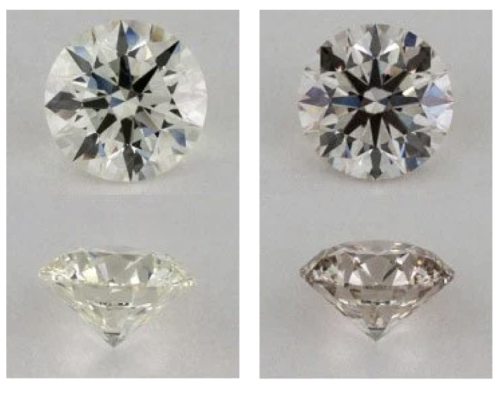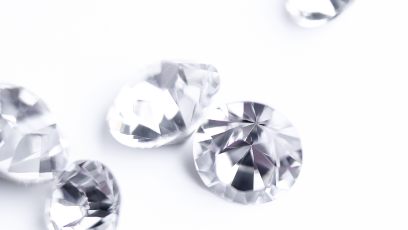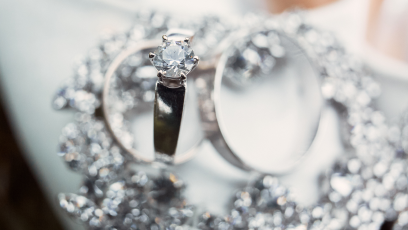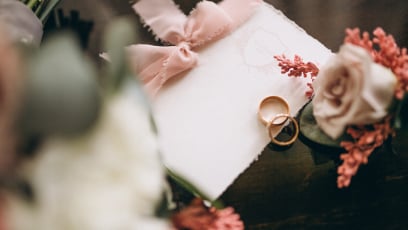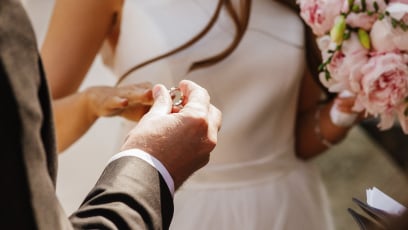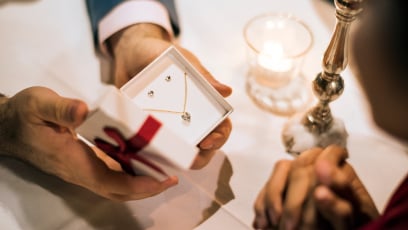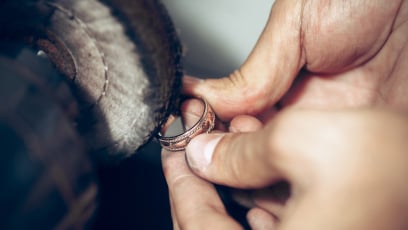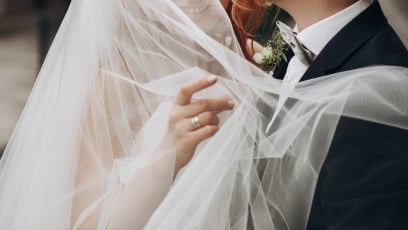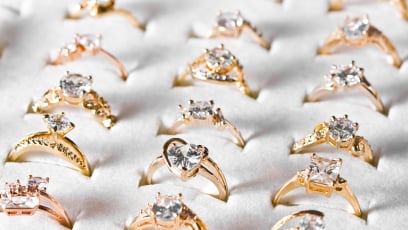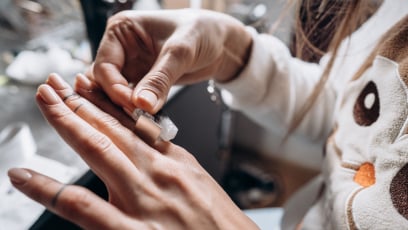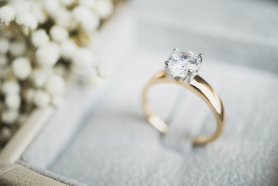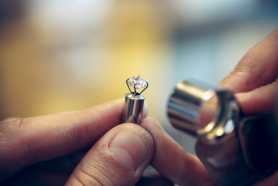GIA Teaches You 4Cs - How To Choose Giamond

The color grade of the diamond
The color rating of diamonds is divided from D highest → Z lowest, a total of 23 grades, and the color is also transparent and colorless → light yellow (with trace nitrogen elements) When you look at the diamonds from the side or bottom, you will see their slight color difference. However, since we only observe the surface of the diamond after it is set, it is difficult to distinguish it by the naked eye with a difference of 1-2 levels.
 D-F
Color
Diamonds with colors from D to F are called transparent colorless diamonds
D-F
Color
Diamonds with colors from D to F are called transparent colorless diamonds
 G-J
Color
Diamonds with colors from G to J are called nearly colorless diamonds
G-J
Color
Diamonds with colors from G to J are called nearly colorless diamonds
 K-M
Color
Diamonds with colors ranging from K to M are called extremely yellow diamonds
K-M
Color
Diamonds with colors ranging from K to M are called extremely yellow diamonds
Diamond color tips
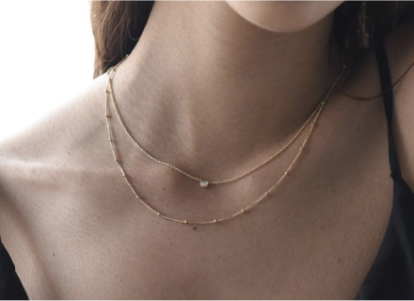
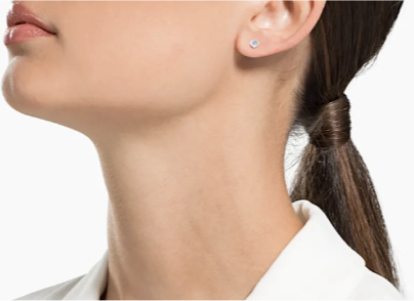









-
Ordinary daily use of diamond jewelry
Choose diamonds less than 1 carat for ordinary daily diamond jewelry purposes, such as small pendants, rings, earrings, you can choose the color grade G-K, because the price is more economical and suitable for setting off at different times.
-
Proposal diamond ring use
For the color grade of the diamond ring, you can choose the color grade D-H according to your budget. Because ladies can easily see the color difference with the naked eye, choosing transparent and colorless to close to colorless diamonds will allow boyfriends to buy them with confidence, and the marriage proposal will definitely be smoother.
-
Buy large carat diamonds
The larger the carat size of the diamond, the larger the diameter, the more obvious the color will be on the visual effect. Therefore, large carat diamonds can choose higher diamond color grades, such as diamonds with color grades D-G.
-
Buy shaped diamonds
Special-shaped diamonds of the same color grade, because the cut surface is less than round diamonds, the color may be more obvious visually. Therefore, when choosing special-shaped diamonds, you can choose diamonds of color grade D-G.
-
Support gold selection
If you choose silver-white metal support such as PT platinum/18K white gold, you can choose a more white diamond color grade, such as D-J color grade; 18K gold to 18K rose gold, you can choose a lower diamond color grade such as K color.
-
Collection value diamond grade
Most of the diamonds that reach the collectible color are the top D color, and then they must meet the rare carat size and clarity, which shows that the color grade of the diamond is very important in the value of the diamond.
Fancy diamond
In addition to white diamonds, there are colored diamonds. Only about 1% of diamonds in the world have a natural color and can be called colored diamonds. The colors of colored diamonds include red, orange, yellow, green, blue, purple, brown, black, and gray.
Due to the preciousness of natural color diamonds, when buying colored diamonds, only the concentration of the color will be considered, and the proportion and clarity of the cut will not be paid too much attention.
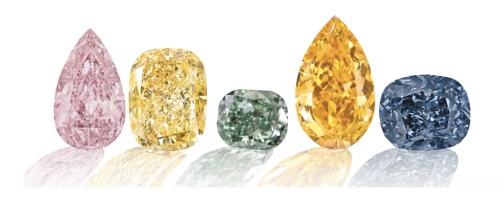
Color density
The first condition for buying colored diamonds is color density and depth. The more intense the color, the more rare and high-value colored diamonds are. The color grade arrangement is different from that of white diamonds. The color grade of colored diamonds is arranged by concentration: From the most Faint to the lightest → Fancy Deep to the thickest
Other colors of diamonds
Fluorescence
Fluorescence is caused by natural trace elements (such as boron), and about 1/3 of diamonds have varying degrees of fluorescence. Only under ultraviolet light, we can see the diamond emit a specific blue or yellow colored light, under natural light, like other diamonds, the naked eye can not distinguish its fluorescence response. Fluorescence is divided into five levels:

Only Very Strong diamonds with very strong luminescence may be slightly bluish under strong ultraviolet rays of about 8-10 degrees, but other luminescence grade diamonds will not be affected. And the price of diamonds with fluorescence response will be more favorable and more cost-effective.
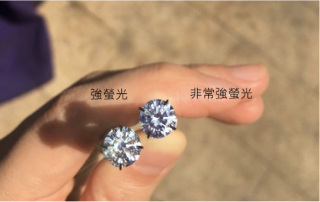
Color cast diamond
Some diamonds will have a color cast, such as greenish, brownish.
This is because of the irregular internal crystal structure caused by the internal growth of diamonds, and the color displayed by the addition of nitrogen.
Since these diamonds are darker in color, the sparkle will be darker than normal diamonds, so it is not recommended to buy them. And there is no data on the certificate to point out this problem. We must have a good reputation and experience to test, and the company will help customers check to ensure that every diamond has no color cast problem.
